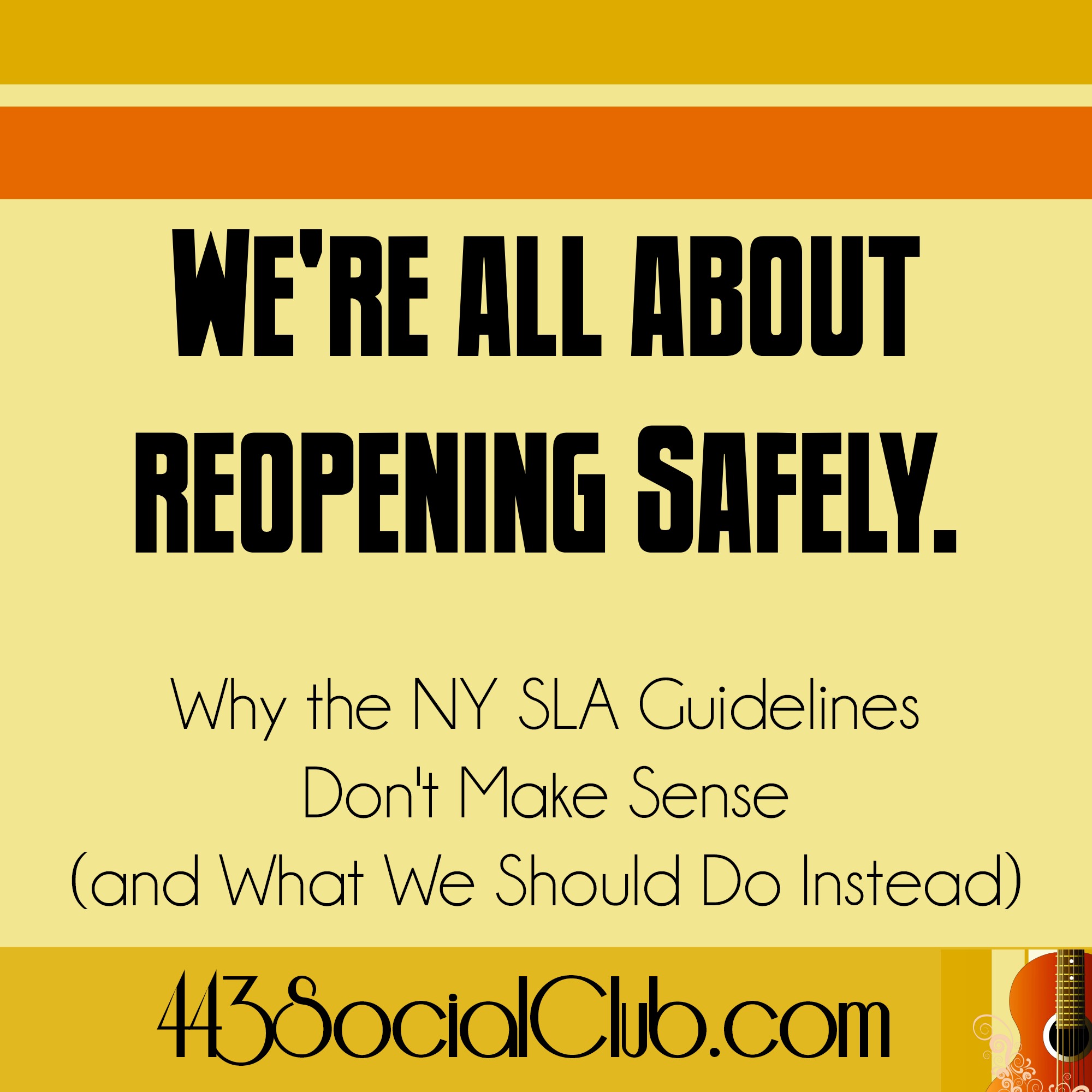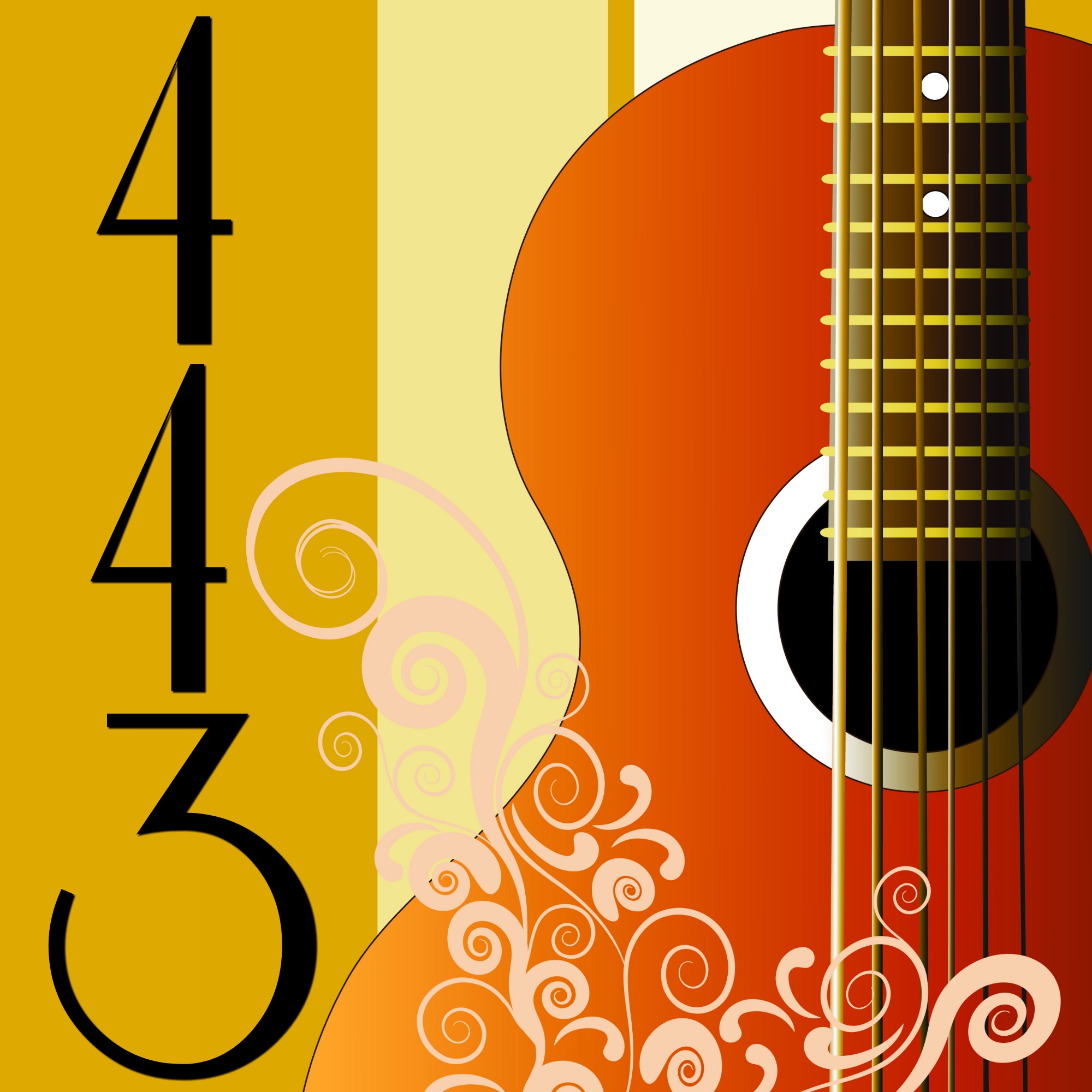
Now that the dust has settled and I’ve had a chance to catch my breath after our abrupt closure on Wednesday (you can read about that in detail HERE), I’ve had some time to ponder the big picture.
If you haven’t been following the story, last week the NY SLA “clarified” an existing rule regarding live music.
“Currently, only incidental music performances are safe and permissible. Incidental music is non-ticketed, unadvertised performances that accompany and are incidental to a dining experience; i.e., patrons have come to dine, and the music provided is incidental to the dining experience.”
“This means that advertised and/or ticketed shows are not permissible. Music should be incidental to the dining experience and not the draw itself.”
As crappy as the whole situation has been, I understand why it happened.
But first, I’m calling bullshit on the claim that this guidance is not new (NY State Doubles Down on Live Music Ticketing Ban: “This guidance is not new”).
In June I emailed Empire State Development, which is the agency the county executive and governors offices were referring reopening questions to. I asked if live music was allowed and about capacity.
This was their response on June 24, 2020:
Ms. Leone,
Thank you for your email. Restaurants or other food and beverage establishments that have a license through the State Liquor Authority are allowed to offer on-premise live music if they are licensed for such activity. Currently, there is no specific prohibition of on-premise live music, as a form of small-scale entertainment exclusively for customers and patrons of a restaurant or other food and beverage establishment. However, restaurants and establishments must adhere to (1) the non-essential gathering limit in effect for their region to restrict the size of any congregation of listeners that may occur, (2) appropriate social distancing among listeners, including customers and patrons, of at least six feet, as well as additional distance of at least twelve feet from any singers and (3) appropriate cleaning and disinfection protocols set forth by the Department of Health.
Furthermore, the 50% capacity for restaurants and bars is still in effect. The 33% number outlined in phase four is specific to places of worship. That has been increased from 25%. Please let me know if you have further questions.
Dan
I see nothing in here about ticketing, advertising or live performances not being allowed. Apparently, bar owners were supposed to discern that live music was prohibited when the offices charged with explaining the rules to the public were not even aware of it.
Anyway, back to why this happened.
It’s not because Gov. Cuomo “hates live music”, is “on a power trip” or is “trying to destroy our industry”, or even my personal favorite “did someone’s daughter get on the tour bus?”
There are two reasons, actually.
Reason #1: Lack of understanding of how our industry works
Here’s the real deal –
Ticketing is a critical tool in controlling a crowd. With drastically reduced capacity, selling a finite number of tickets allows venues to strictly control who shows up for an event. Not allowing ticketing opens up the door to a large mob of possibly unhappy people showing up.
Nobody wants that, right?
Charging for a show means guests are paying for the experience, which means we are far less likely to have an issue with compliance. Not to mention, it’s the only way to make it financially viable and pay everyone.
The SLA wants “music to be incidental to the dining experience and not the draw itself”. To that, I would argue music being “the draw itself” is what makes venues like mine uniquely able to comply with all COVID-19 precautions.
We are a seated, listening room style venue featuring acoustic original music. Our guests are accustomed to sitting down, enjoying food and drink and focusing on the performance on stage. Music is the “draw itself” and this a GOOD thing. They are not milling around, they aren’t even talking to each other much during the show. Our performers are singer-songwriters and our guests are there to appreciate their music and stories.
A “concert” doesn’t always mean a sweaty mass of people pushed up to a stage.
In fact, a show at our place is nearly identical to the experience of dining in a restaurant at 50% capacity, which IS allowed. Large weddings are allowed too, but with this thinking, 36 people sitting on my open-air patio listening to a solo artist is somehow more of a risk than 150 people drinking and mingling at an indoor wedding.
Does that make any sense?
Reason #2: People are Idiots
Yeah, people are idiots…we’ve all seen enough photos and videos on social media to prove it.
A local winery posted multiple videos of a band playing in their outdoor venue, a packed dance floor, and the maskless lead singer running into the (mostly unmasked) crowd to SING INTO PEOPLES FACES.
Droplets, y’all…DROPLETS.You’re not supposed to project them into people’s faces.
A sprawling outdoor suburban venue booked full rock bands with no pretense of providing seats to attendees, so hundreds of people milled around during the shows, mostly without masks.
A city venue set up a stage behind their building and posted videos of shows with almost nobody seated or masked.
Some places aren’t even pretending to follow guidelines with crowded bars and not a mask in sight. Others are playing fast and loose with the food-with-alcohol guideline. Like, if you pay cash, you don’t have to buy the single meatball, but if you pay with a card you do.
And that’s just in our neck of the woods here in Central New York…so I get it.
We can’t let people run amok and gather in huge groups without masks, obviously. But not every venue has taken such a cavalier attitude.
After we confirmed with Empire State Development that we were indeed allowed to have live music, we changed our entire interior seating arrangement and made all shows pre-paid or reserved online only. We put a tent on our sidewalk to eliminate a bottleneck at the door while guests filled out health declarations, got their temperatures checked and gave us contact tracing information. We revamped our patio and moved everything we could outside. We switched to 100% table service and put locks on the bathroom doors so we could maintain one in/one out. When the mandate that you have to order food in order to have alcohol was announced, we embraced it rather than trying to find a sneaky way around it – you won’t find “Cuomo Chips” on our menu. We reduced our interior capacity to 41%, which is 36 people. Our patio holds about the same number, and generally, we aren’t using both spaces at the same time. We waited a month after we were first allowed to open to make sure cases didn’t spike in our area, and then began VERY slowly – one show in week one, two shows in week two, three shows in week three.
Operating at half capacity with all these precautions in place requires super-human effort and it’s guaranteed not to be profitable.
We are playing the long game and this was the first step.
This updated language will have the same result as the food-with-alcohol mandate did. Venues who weren’t complying before are still not complying and venues that were busting their asses to do everything right now have another set of obstacles to overcome – if they can remain open at all.
Not being allowed to market live music means we have to open our doors and just hope for the best – and that isn’t a risk we’re willing to take.
I don’t like to bitch unless I have a better solution, so here’s mine:
- Set a maximum number of people allowed at any indoor event with music. We have a max number for gatherings, why not use that?
- Set a maximum number for large outdoor venues with seating for each guest mandatory.
- Penalize the venues in violation, not the entire industry. Not everyone is trying to find “creative” loopholes.
- Begin a phased reopening plan specific for our industry, starting with venues under 100 people.
- There are dozens of different business models under the “Arts & Entertainment” umbrella. Allow businesses to submit their reopen plans, or at the very least don’t assume everyone is a giant venue and/or incapable of adapting. Broad stroke rules are not going to work here.
Right now there is no plan, no information, and no target date for our industry. Every other industry has opened back up, but somehow we are supposed to just sit quietly at home with no income and no idea when we might be able to get back to work.
It’s not even a tiny bit realistic.
Every week a few more venues close their doors for good and even iconic stages are hanging by a thread. If something does not change, there won’t be any stages to go back to when we come out on the other side of this. The folks at NIVA have been lobbying hard to secure funding to keep venues afloat, but unfortunately, Congress went on break without making a decision.
I’ve said this before, and I’ll say it again – we are more than happy to keep our doors closed as long as we have the support to do so. But with no help forthcoming, we have to make decisions based on our current reality – which includes watching our businesses slip away and our staff struggle to keep their heads above water.
I absolutely appreciate that we live in a state with strong, cautious leadership and I am grateful every day we didn’t have to contend with a shitshow situation like Florida or Texas. But if we are making decisions based on the data, NY is enjoying some of the lowest numbers since this whole saga began.
I humbly submit that it’s not unreasonable to allow small-scale music and arts businesses to begin opening their doors…and members of our industry should have a seat at the table to help make those decisions.


